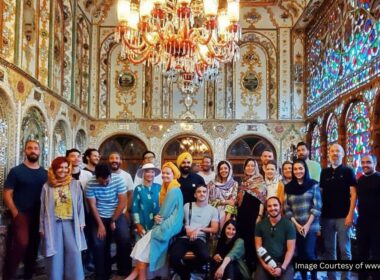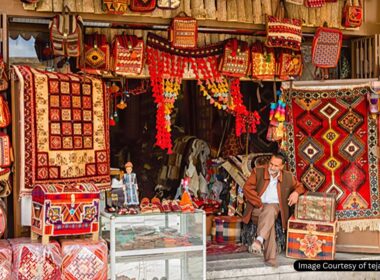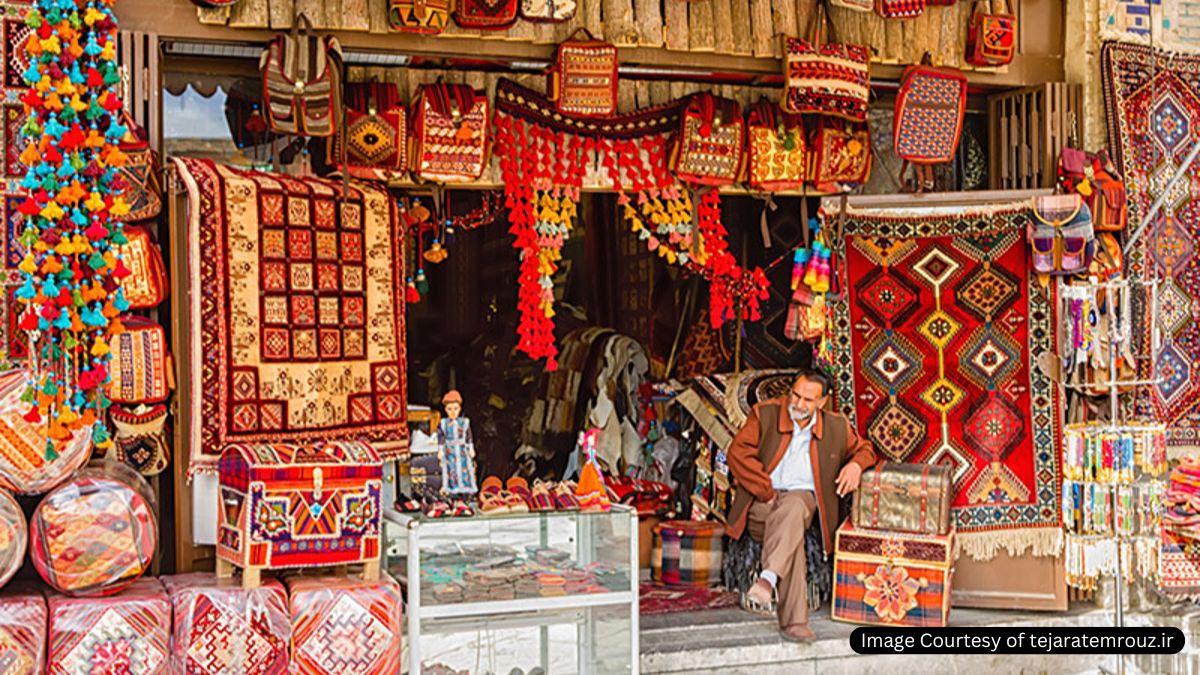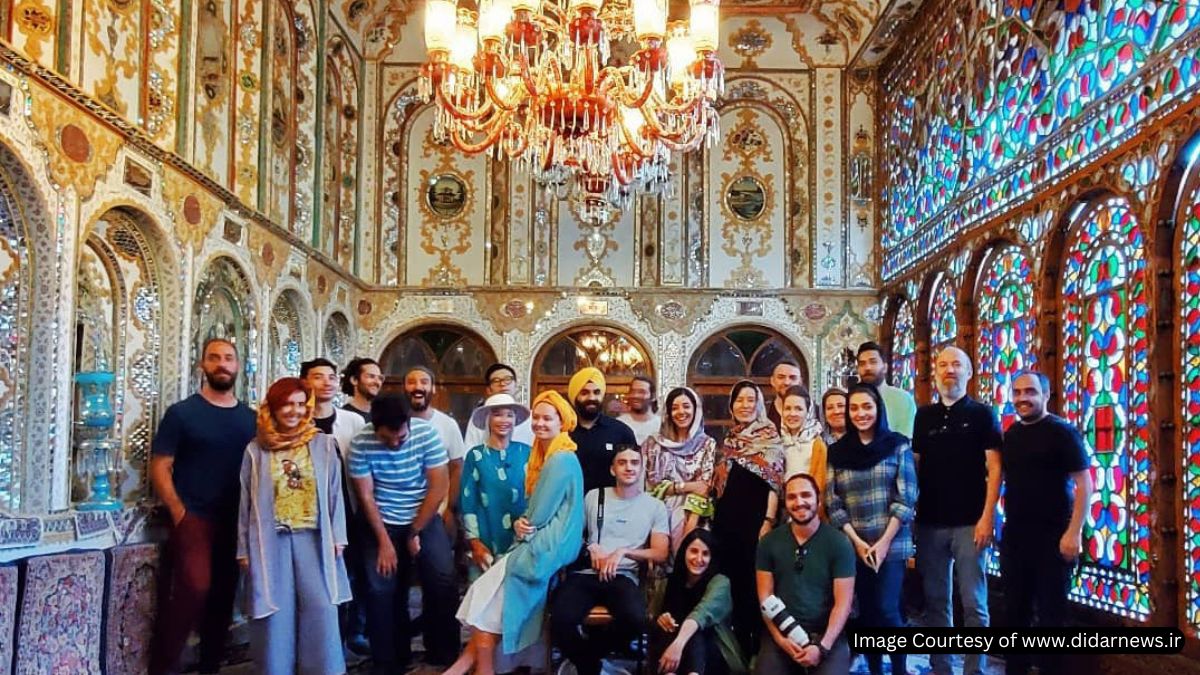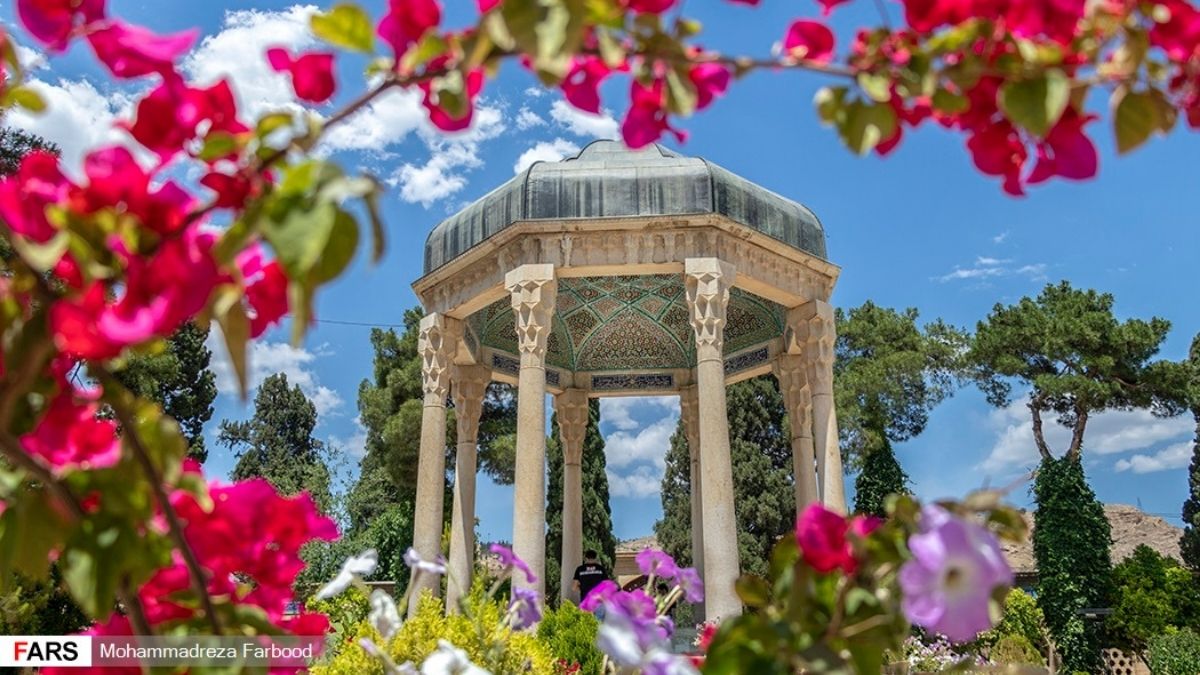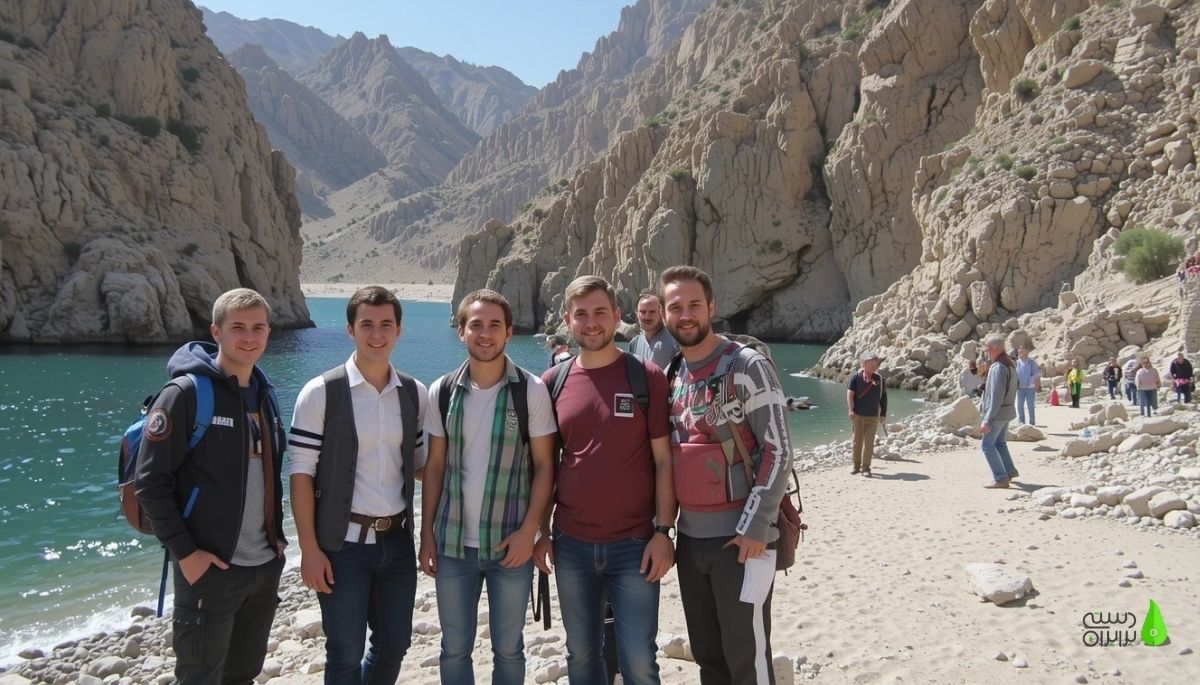
Shiraz, Iran’s cultural capital, is best explored on foot—especially its historic Zand Quarter. Built in the 18th century under Karim Khan Zand’s visionary rule, this district blends Persian artistry, architectural marvels, and living history. This half-day stroll in our walking tours to Iran covers six iconic sites and ends with authentic Persian cuisine. Let’s step back in time!
Why Shiraz Is a Must-Visit on Persia’s Journey
Shiraz isn’t just a city—it’s a portal to Persia’s soul. Beyond its poetic legacy, Shiraz is the gateway to Persepolis, the awe-inspiring Achaemenid capital, and Pasargadae, Cyrus the Great’s tomb. Both are UNESCO sites and are just an hour away. The city thrived as a Silk Road crossroads, blending Zoroastrian, Jewish, and Islamic influences.
It is seen in landmarks like the 19th-century Nasir al-Mulk Mosque, where sunlight paints its stained-glass windows into a kaleidoscope. Shiraz’s temperate climate nurtures vineyards (once famed for wine) and fragrant orange groves framing its turquoise-domed shrines. Its cosmopolitan spirit thrives in art galleries, saffron-infused cuisine, and warm, tea-loving locals who embody Persian mehman-navazi (hospitality). A journey here isn’t travel—it’s time travel.
1. Karim Khan Citadel: A Fortress of Power and Artistry in Shiraz’s Heart
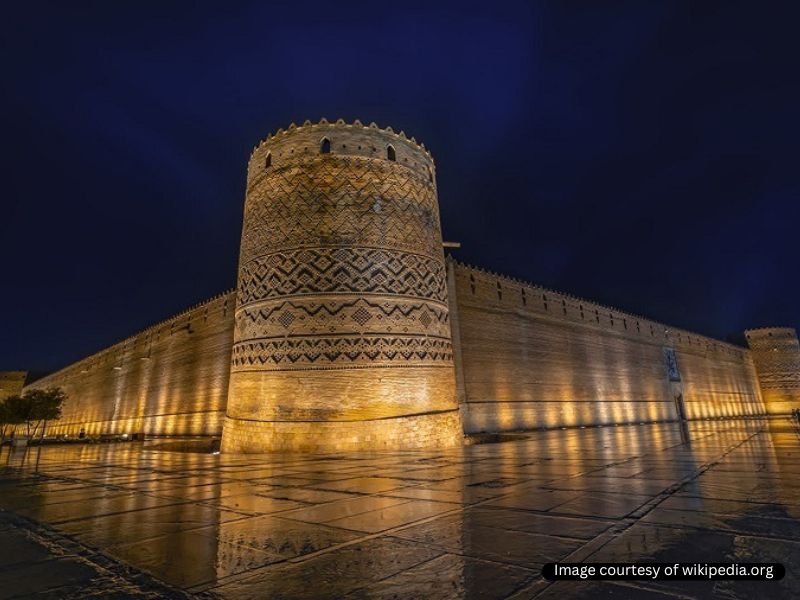
Start your walking tour here: Shahrdari Square, Northeast Side
Karim Khan Zand, who ruled Iran from 1751–1779, rejected the title of “king,” instead calling himself Vakil-o-Roaya (Attorney of the People). His citadel served as both a military stronghold and a royal residence.
Architectural Highlights:
- Rostam Tilework: The eastern entrance features glazed tiles depicting Rostam, the legendary hero of Ferdowsi’s Shahnameh, battling demons.
- Karimkhany Citadel: A rectangular brick fortress with 14-meter-high walls and circular bastions at each corner.
- Inner Oasis: Inside the above citadel, there is a serene courtyard with orange trees, private baths (visit the southeast section), and four residential wings showcasing Zand royal family lifestyle.
Visitor Tip: Arrive early to avoid crowds and capture the citadel’s golden-hour glow.
2. Pars Museum: A Jewel Box of Persian Art & History
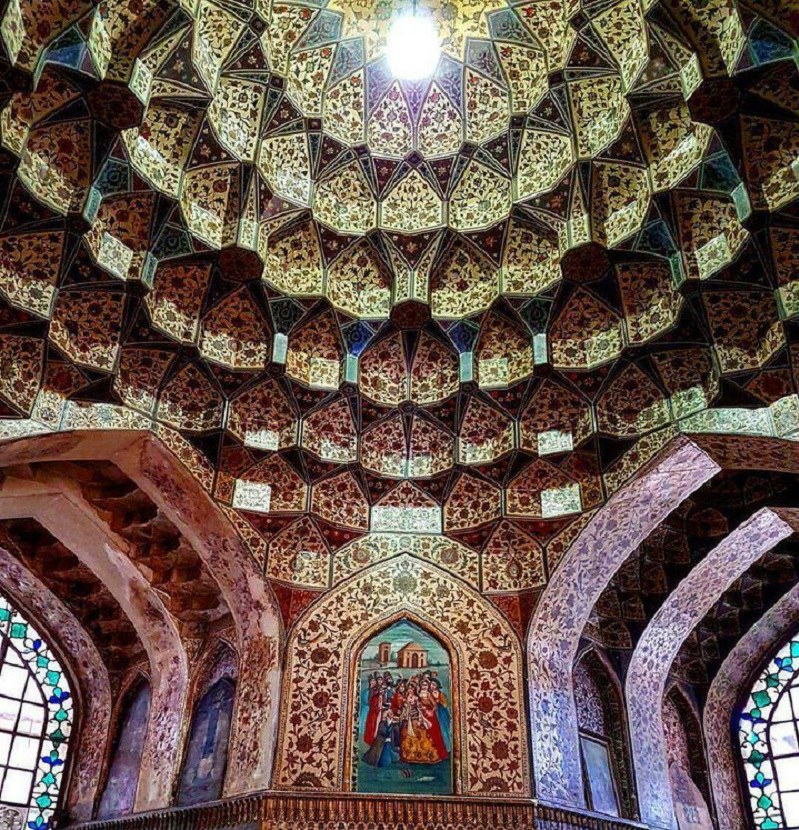
Located in Nazar Garden, a 5-minute walk south of the citadel.
This octagonal Kolah Farangi (pavilion) building, named for its European-influenced design, once hosted Karim Khan’s diplomatic meetings. Today, it houses:
- Exquisite Quran manuscripts
- Lacquer-work boxes from the Qajar era
- Portraits of Zand rulers and Safavid-era ceramics
Design Details: Admire the intricate muqarnas (honeycomb vaulting) and floral tilework framing the central dome.
3. Vakil Mosque: A Masterpiece of Zand-Era Tilework
A 10-minute walk east of Nazar Garden, near Vakil Bazaar.
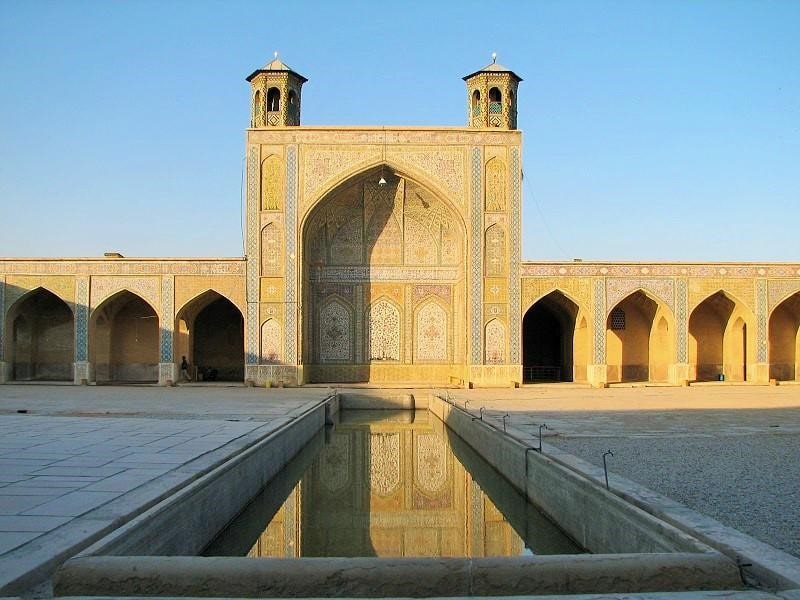
From a far distance, it easily invites you to its colorful celebration of striking glazed tiles bearing beautiful floral patterns. After passing across a wide-open courtyard, you will enter the Southern Shabestan, where a columned hall is hidden behind its tall entrance portal.
Architectural Wonders:
- Courtyard: Framed by 48 tiled arches and a reflective pool.
- Prayer Hall: 48 spiraled columns support a vaulted ceiling adorned with arabesque patterns.
- Mihrab & Minbar: The prayer niche and pulpit feature calligraphic inscriptions and peacock motifs.
Did You Know? The mosque’s name, Vakil (“Attorney”) echoes Karim Khan’s self-chosen title.
4. Vakil Bathhouse: Step Into 18th-Century Persian Daily Life
A 3-minute walk west of Vakil Mosque.
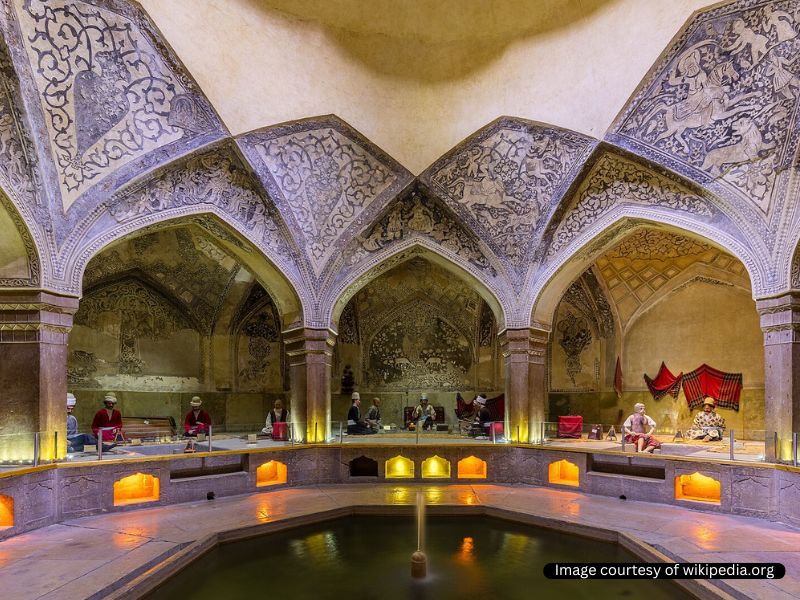
Originally a public bath, this site now serves as a museum showcasing:
- Wax figures reenacting traditional bathing rituals
- Architectural innovations like Khanu (underground heating)
- Temporary exhibitions (e.g., Persian carpets)
Design Note: The bathhouse’s arched ceilings amplify sound—a feature used for privacy in its heyday.
5. Vakil Bazaar & Sara-ye Moshir: A Sensory Journey Through Persian Crafts
Enter via the Southern Gate (colorful herb stalls)
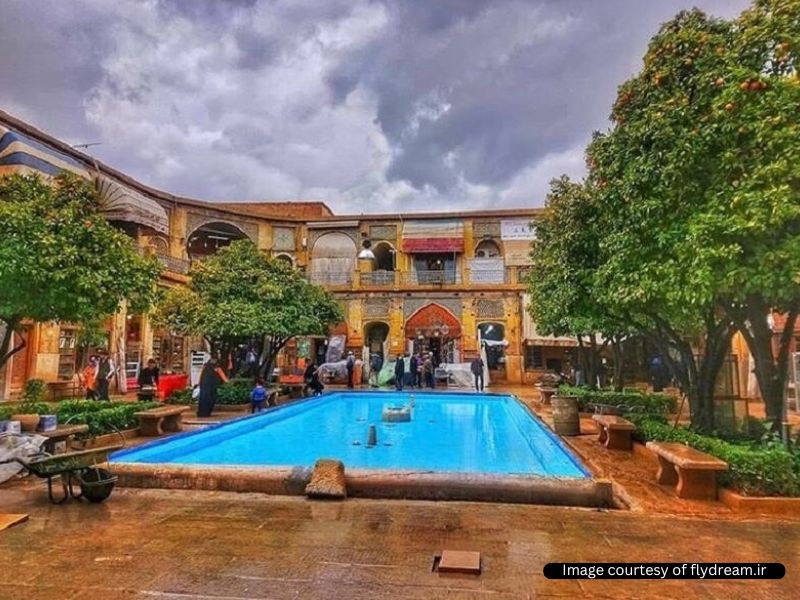
No Shiraz tour is complete without diving into its iconic bazaar! From Pars Museum, head east to the main entrance. It’s a short walk and the spot where two gateways await:
Southern Gate (Visitor Favorite):
Follow your nose to vibrant spice stalls and kaleidoscopic shops beneath soaring 17th-century arches. Don’t miss the Chaharsoo—a domed crossroads where passageways spill into workshops and glittering fabric stores. Pro tip: Qashqai nomads source materials here for their iconic embroidered dresses!
Northern Gate (Local Charm):
Peek into everyday life at stalls brimming with household goods—perfect for authentic souvenirs and people-watching.
Hidden Gem: Saraye Moshir
Just 10 meters left of the bazaar’s end, this 19th-century caravanserai wows with:
- A tranquil courtyard pool framed by floral tiles.
- Craft stalls selling Fars Province treasures: Persian carpets, copperware, and delicate khatam (inlaid wood).
Why rush? Let the bazaar’s rhythms—haggling, clinking teapots, the whisper of silk—pull you deeper into Shiraz’s soul.
6. Sara-ye Mehr Restaurant Inside Sara-ye Moshir
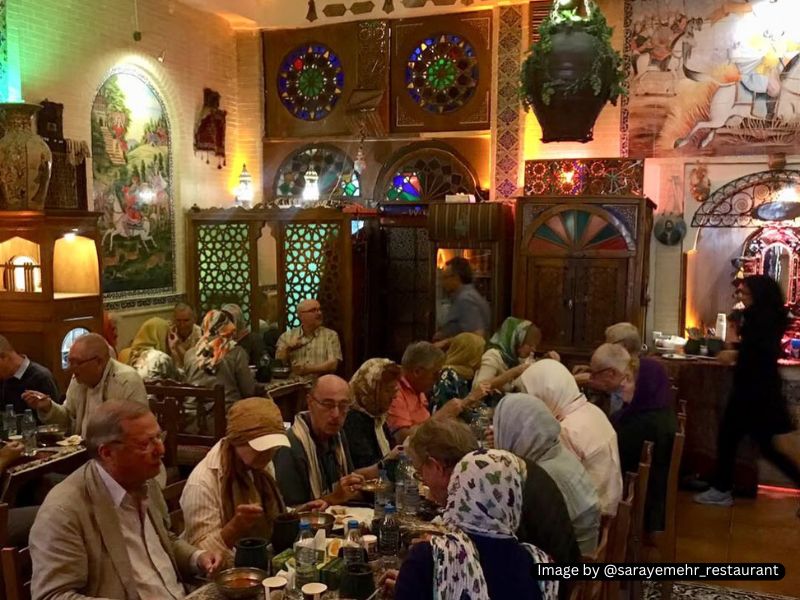
The ambiance and decoration are similar to those of Iranian teahouses in the past centuries. Dine under vaulted ceilings with lantern-lit alcoves—perfect for Instagram-worthy shots. The food is delicious, and you may feel like you ate during the Zand period! The best way to end your walking tour of Shiraz is to have a meal at this place.
Menu Highlights:
- Doogh: A minty yogurt drink to cool off.
- Dizi: A slow-cooked lamb and chickpea stew (mash and sip the broth!).
- Kebab-e Barg: Marinated lamb skewers with saffron rice.
Why This Shiraz Walking Tour Stands Out
Shiraz’s Zand Quarter isn’t just a historical district—it’s a living museum where past and present coexist. Ready to explore?
- Efficiency: Covers six landmarks in 4–5 hours.
- Cultural Immersion: From Zand-era politics (citadel) to artisan traditions (bazaar).
- Pro-Traveler Tip: For a full-day itinerary, pair this tour with visits to Nasir al-Mulk Mosque or Hafez’s Tomb.


